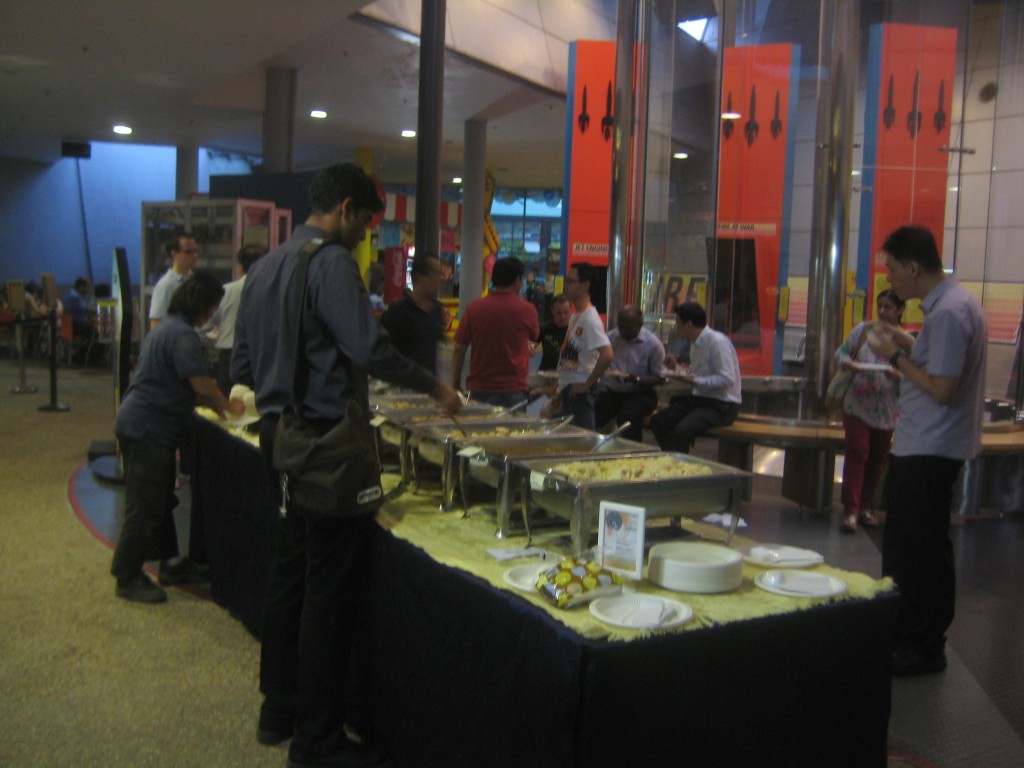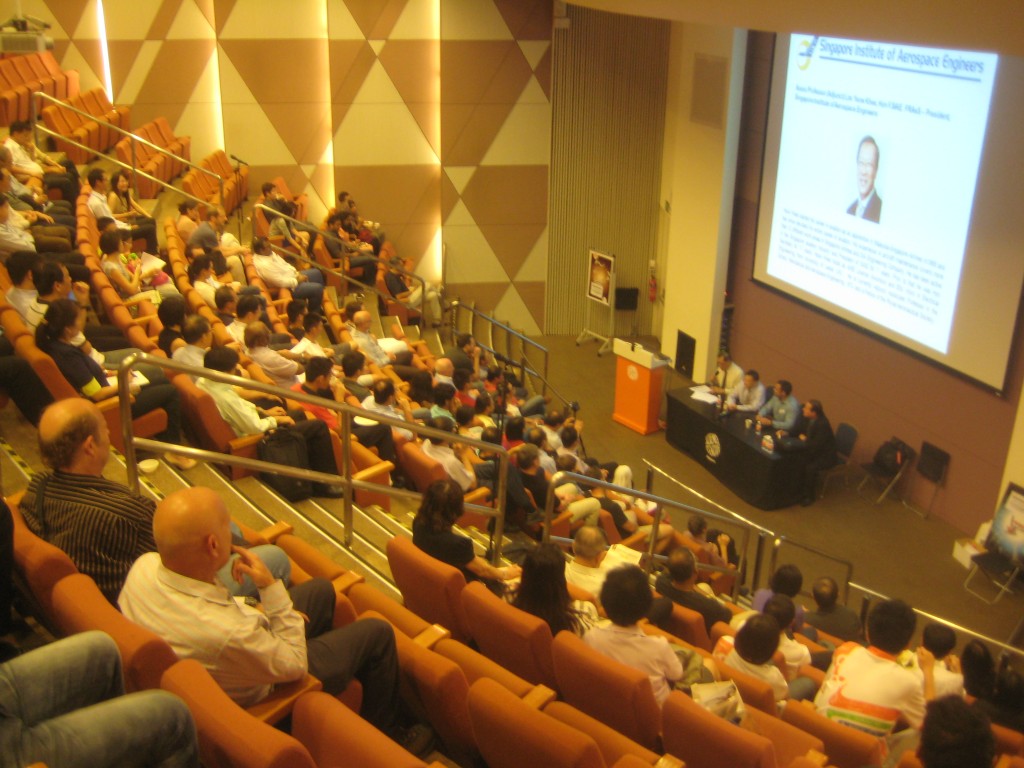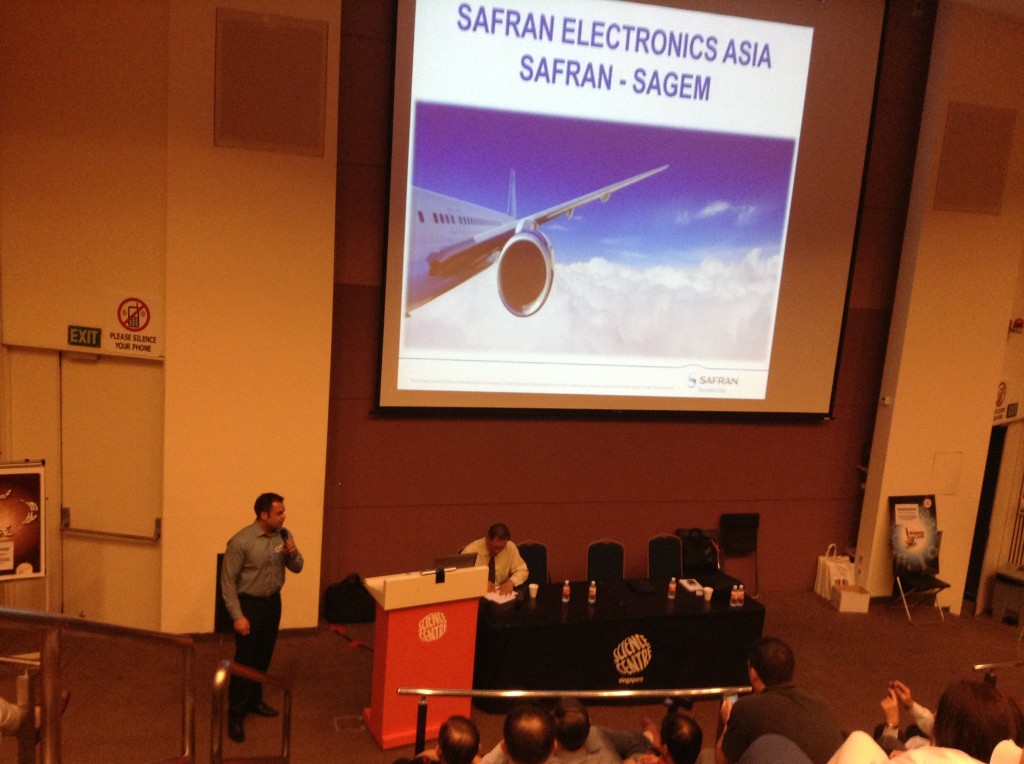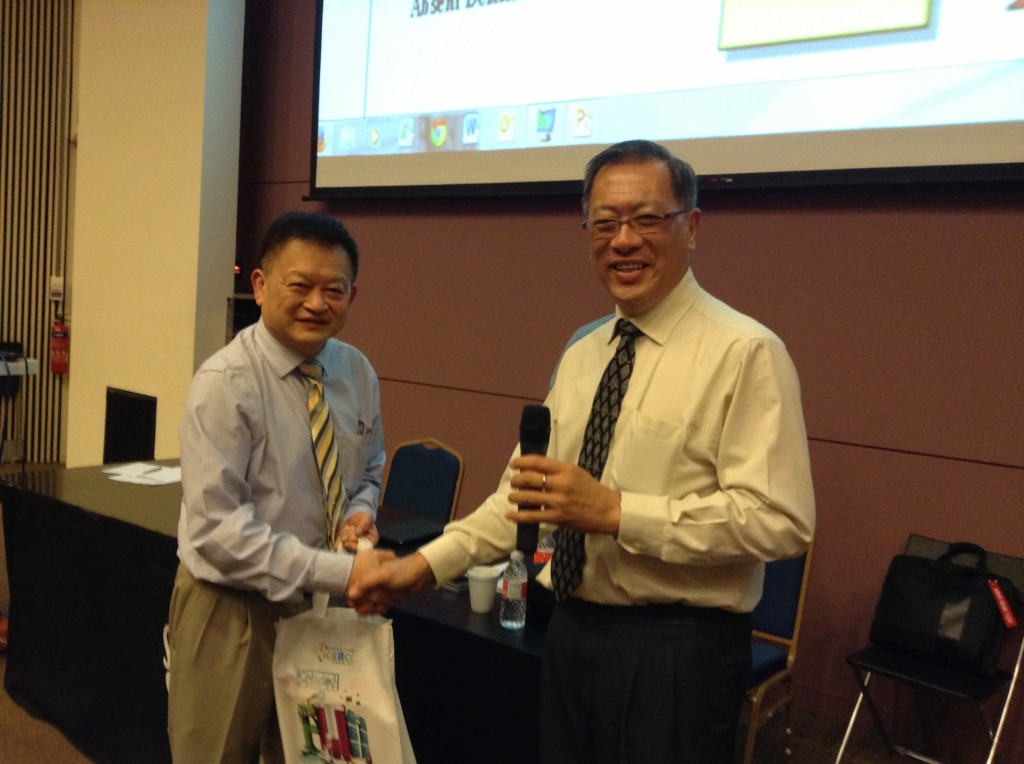SIAE and Science Centre Singapore jointly held a public forum on the 29th of May at the Science Centre on 29 May 2014. More than 100 people from various professions, aviation enthusiasts, and students, attended the three-hour session.
They were treated to a detailed analysis of the preliminary official report on the missing B777 with a recording of the cockpit voice recorder. Mr Michael Daniel, MD of Aviation Insight and former Air Accident Investigator with the FAA explained the process involved in the activation of search and rescue operations and the international laws governing the participation of nations in such investigations.
Dr Hsin Chen Chung, Director of Air Traffic Management Research Institute spoke about the dramatic loss of five of seven communication channels through which Air Traffic Control centres can communicate with an aircraft. He showed how the situation was more difficult to understand because the aircraft was at the crossroad of several FIRs, where many line-of-sight communication channels are not reachable.
A/Prof Lim Yeow Khee, President of SIAE and avionics engineer explained the operation of radio and radars on aircraft and their limitations. Ground radars and VHF, the primary communication channel in civil aviation, are limited to about 250 nautical miles (line-of-sight). This is because of the curvature of the earth and tracking of aircraft beyond the line, such as trans-oceanic flights, requires satellites. He explained the operation of SATCOM on aircraft using geo-stationary satellites and spoke about why Inmarsat data is the best bet to finding the aircraft.
However, searching for the “Black Box” is only the first part of the game. Mr Leon Loxos from SAFRAN Electronics Asia explained the tedious process of recovering the data after the FDR or CVR has been found. The audience was shown how the bits and bytes stored in chips need to be deciphered and presented in readable scientific format.
In summing up the discussion, Prof Lim hoped that the audience could now appreciate the complexity of the situation that led to the most mysterious disappearance of a commercial aircraft in the history of aviation. The international nature of aviation and the interdependence of countries to communicate and track aircraft in flight is an onerous task. While technology is available to track each aircraft through the use of satellites, the cost may be prohibitive to airlines. This is an international responsibility and it is heartening to see so many countries lending their resources to help to locate the aircraft. SIAE and Science Centre Singapore are very pleased to have been able to host this event and would like to thank our sponsor SAFRAN Electronics Asia Pte Limited.








